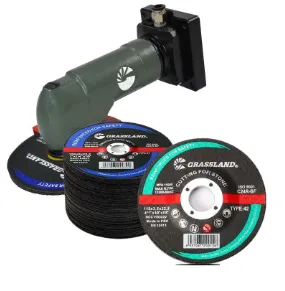

Choosing the right cutting disc also entails understanding the nuances of different abrasive compositions. For instance, aluminum oxide discs are ideal for cutting ferrous metals, while silicon carbide variants are better suited for non-ferrous metals. This selection process is a testament to the expertise required in understanding the characteristics and applications of each disc type, allowing craftsmen to tailor their choice to specific project requirements. From an environmental standpoint, modern disc manufacturers are increasingly prioritizing sustainable practices. By employing eco-friendly materials and reducing chemical emissions in the production process, they ensure that their products adhere to stringent environmental standards without compromising on performance. This commitment to sustainability not only appeals to environmentally conscious consumers but also enhances the overall trustworthiness of the brand. Furthermore, maintaining the integrity of a metal cutting disc involves adhering to best practices in storage and handling. Proper storage in a dry, climate-controlled environment prevents moisture-induced rust and degradation, preserving the disc's performance capabilities. Coupled with routine inspections for wear and tear, these practices are essential for ensuring safety and reliability in the workspace. In conclusion, 9-inch metal cutting discs are more than mere tools; they are a confluence of innovation, expertise, and reliability. Their ability to blend advanced technological features with practical applications makes them invaluable assets in any metalworking toolkit. By selecting the right disc and adhering to best practices, users can achieve unmatched precision, efficiency, and safety in their projects, ultimately enhancing their craft and yielding superior results.
Post time:Feb - 06 - 2025
















